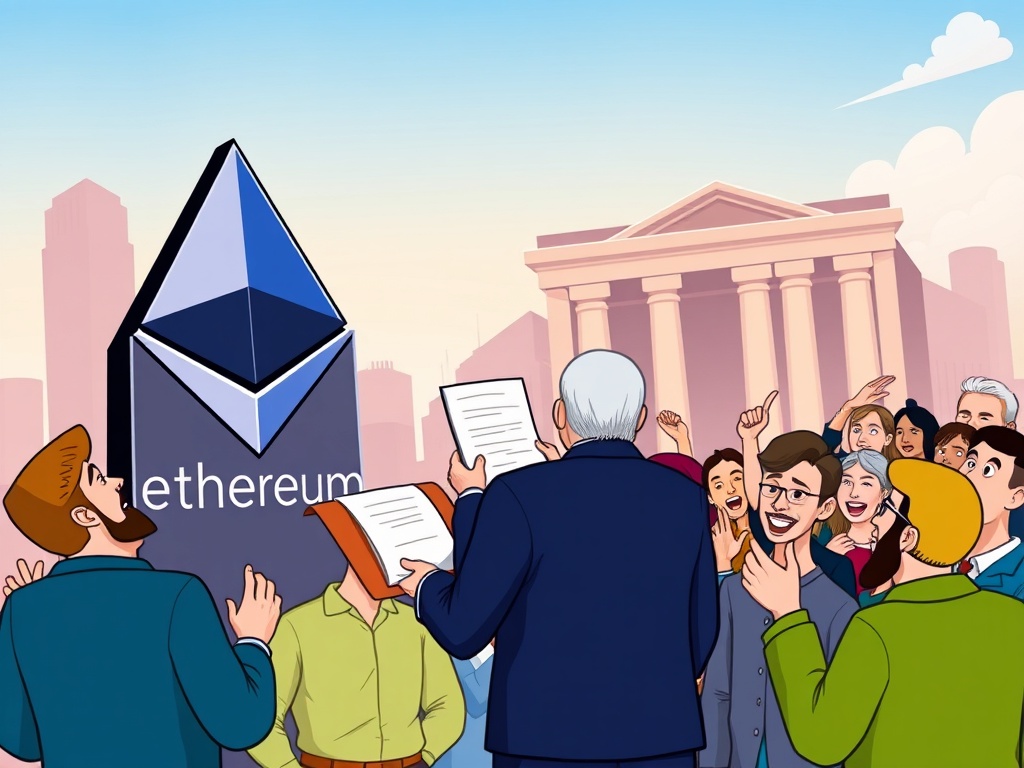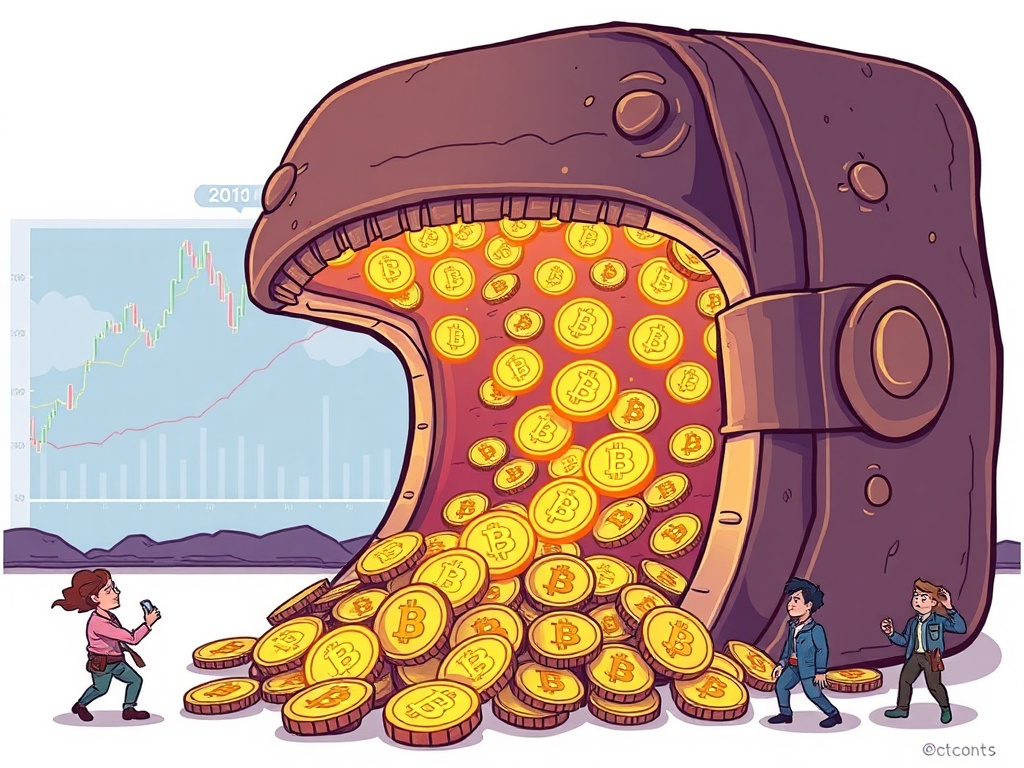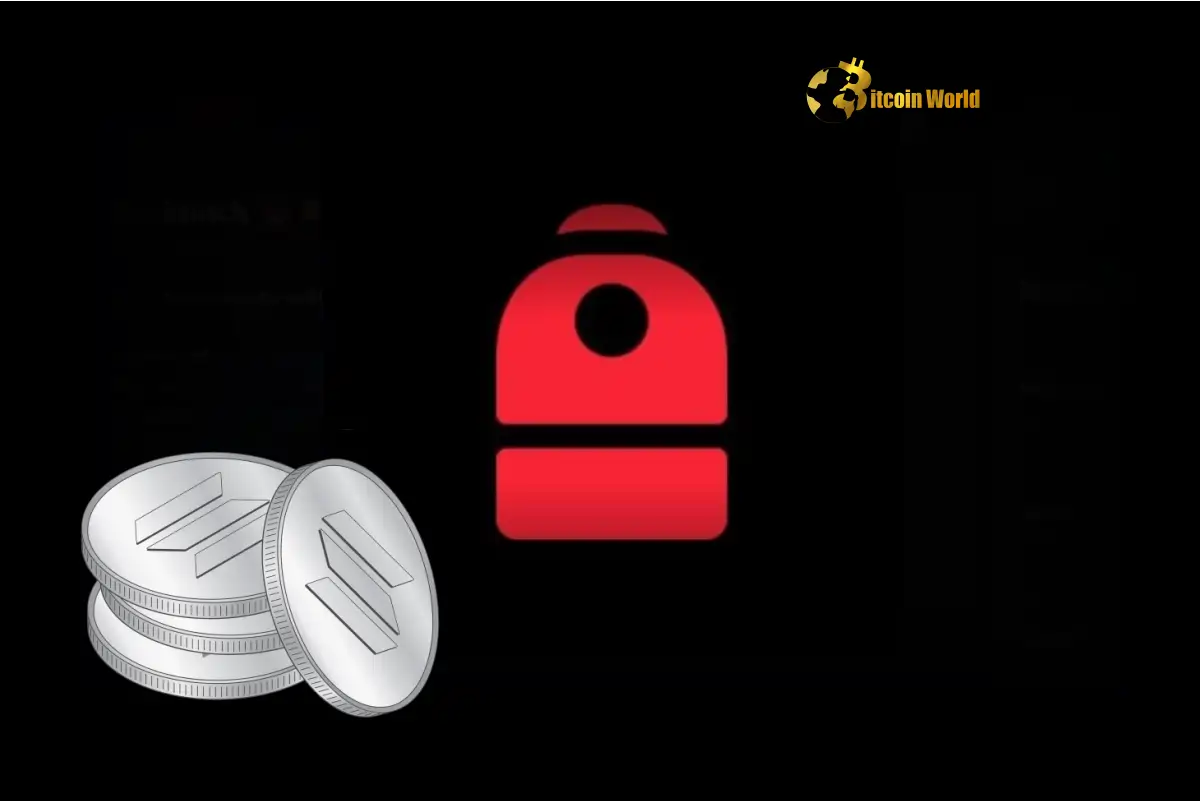BitcoinWorld

Spot ETH ETF: Game-Changing Breakthrough as SEC Acknowledges BlackRock’s Application
The cryptocurrency world is buzzing with monumental news: the U.S. Securities and Exchange Commission (SEC) has officially acknowledged BlackRock’s filing for a spot ETH ETF. This isn’t just another headline; it’s a significant milestone that could reshape the landscape of digital asset investments, potentially opening the floodgates for mainstream capital into Ethereum. For years, investors have dreamed of a regulated, accessible pathway to invest directly in cryptocurrencies, and BlackRock’s move brings that dream closer to reality for Ethereum, marking a pivotal moment for the industry.
What Exactly is a Spot ETH ETF and Why Does it Matter So Much?
To truly grasp the significance of BlackRock’s application, it’s essential to understand what a spot ETH ETF entails. An Exchange-Traded Fund (ETF) is an investment vehicle that holds assets like stocks, bonds, or commodities, and its shares trade on traditional stock exchanges. For a cryptocurrency ETF, this means investors can gain exposure to a digital asset without directly owning it or dealing with the complexities of digital wallets and exchanges.
- Spot vs. Futures: The crucial distinction here is ‘spot.’ A spot ETF holds the actual underlying asset – in this case, Ethereum – directly. This differs from a futures ETF, which invests in futures contracts that bet on the future price of an asset. Investors often prefer spot ETFs for direct price exposure and less reliance on complex financial instruments.
- The Staking Component: BlackRock’s proposed ETF includes a unique staking component. Ethereum operates on a Proof-of-Stake (PoS) consensus mechanism, where holders can ‘stake’ their ETH to help secure the network and earn rewards. If approved, this ETF could potentially offer investors the benefit of staking rewards alongside direct ETH exposure, a compelling proposition for traditional finance.
The potential benefits of a spot ETH ETF are substantial. It offers a regulated, accessible, and familiar investment product for a broad range of investors, from retail to institutional. This could lead to increased liquidity for Ethereum, enhance its legitimacy within traditional financial circles, and simplify the investment process by removing the technical hurdles associated with direct crypto ownership.
Why is BlackRock’s Filing for a Spot ETH ETF Such a Game-Changer?
BlackRock, the world’s largest asset manager with trillions under management, has an unparalleled track record and influence in the financial world. Their involvement alone sends a powerful signal to the market and regulators. When BlackRock files for an ETF, it’s rarely a speculative move; it’s a calculated decision backed by extensive research and a deep understanding of market demand. Their previous success in launching a Bitcoin spot ETF, after years of rejections from the SEC, sets a crucial precedent.
The ‘BlackRock effect’ is not to be underestimated. Their entry into the Bitcoin ETF space was widely seen as a catalyst for increased institutional adoption and market stability. A similar trajectory is anticipated for Ethereum. This move suggests that major financial institutions are increasingly viewing cryptocurrencies, particularly Ethereum, as legitimate and valuable assets worthy of inclusion in diversified portfolios. It could pave the way for other large asset managers to follow suit, further solidifying Ethereum’s position in mainstream finance.
Moreover, BlackRock’s application is comprehensive, addressing many of the concerns previously raised by the SEC regarding market manipulation and investor protection. The inclusion of a staking component, while adding complexity, also demonstrates an innovative approach to maximizing potential returns for investors, reflecting a deeper integration with Ethereum’s native economic model.
Navigating the Regulatory Waters: The SEC’s Path to a Spot ETH ETF Approval
The U.S. Securities and Exchange Commission (SEC) plays a critical gatekeeping role in approving investment products. Historically, the SEC has been cautious, even skeptical, about cryptocurrency-related products, citing concerns over investor protection, market manipulation, and the nascent nature of the digital asset space. However, the landscape has shifted significantly, particularly following the approval of several Bitcoin spot ETFs earlier this year.
The SEC’s review process for an ETF application is rigorous and multi-faceted. It typically involves:
- Acknowledgment of Filing: This is the current stage. The SEC formally recognizes receipt of the application, starting a clock for their review.
- Public Comment Periods: The public and interested parties are invited to submit comments on the proposed rule change, providing valuable feedback for the SEC’s consideration.
- Multiple Deadlines and Extensions: The SEC has specific deadlines to make a decision, but they can extend these deadlines multiple times, sometimes for several months, to allow for thorough review and dialogue with the applicant.
- Regulatory Scrutiny: Key areas of focus for the SEC include surveillance-sharing agreements to prevent market manipulation, custody solutions for the underlying assets, and the overall investor protection framework.
A primary hurdle for a spot ETH ETF remains the classification of Ethereum itself. While the SEC has stated that Bitcoin is a commodity, its stance on Ethereum has been less definitive, though recent comments from SEC Chairman Gary Gensler have suggested it could also be viewed as a commodity. The inclusion of staking also adds a new layer of complexity, as the SEC would need to assess how staking rewards are managed and disclosed within the ETF structure, and whether the staking service itself could be deemed a security offering.
Despite these challenges, the precedent set by Bitcoin spot ETF approvals, coupled with growing political and industry pressure, suggests a more favorable environment for Ethereum. The legal clarity provided by recent court rulings concerning crypto assets also contributes to a more defined regulatory path.
What Does This Mean for Investors and the Future of Ethereum?
The acknowledgment of BlackRock’s spot ETH ETF application signals growing institutional confidence in Ethereum’s long-term viability and its foundational role in the decentralized finance (DeFi) and Web3 ecosystems. For investors, this potential approval could unlock several opportunities:
- Broader Market Access: Individuals and institutions who were previously hesitant to engage directly with crypto due to regulatory uncertainty or technical barriers can now gain exposure through a familiar and regulated product.
- Increased Liquidity and Price Discovery: A spot ETF could significantly increase the trading volume and liquidity for Ethereum, leading to more efficient price discovery.
- Enhanced Legitimacy: Approval by the SEC, especially for a product from a firm like BlackRock, would confer a new level of legitimacy on Ethereum as an asset class, potentially attracting even more traditional capital.
However, it’s important to remember that acknowledgment is not approval. The path ahead still involves careful scrutiny from the SEC. Investors should remain informed about the ongoing developments, regulatory updates, and market reactions. While the prospect of a spot ETH ETF is exciting, the crypto market remains volatile, and all investments carry inherent risks.
A Glimpse into Ethereum’s Institutional Future
BlackRock’s spot ETH ETF application marks a monumental moment in the ongoing convergence of traditional finance and the burgeoning world of digital assets. It underscores Ethereum’s growing importance not just as a technological platform, but as a recognized investment asset. While the SEC’s decision is still pending, the acknowledgment itself is a powerful indicator of shifting tides. This development could unlock unprecedented levels of capital and mainstream participation, propelling Ethereum into a new era of institutional adoption and market maturity. The journey towards a fully regulated and accessible Ethereum investment product is well underway, promising an exciting future for investors and the broader crypto ecosystem.
Frequently Asked Questions (FAQs)
1. What is a spot ETH ETF?
A spot ETH ETF is an exchange-traded fund that directly holds Ethereum (ETH) as its underlying asset. It allows investors to gain exposure to ETH’s price movements through a traditional brokerage account, without needing to buy and store the cryptocurrency themselves.
2. How is a spot ETH ETF different from a futures ETH ETF?
A spot ETH ETF holds actual Ethereum, providing direct exposure to its current market price. A futures ETH ETF, conversely, invests in Ethereum futures contracts, which are agreements to buy or sell ETH at a predetermined price on a future date. Spot ETFs are generally preferred for direct asset exposure.
3. Why is BlackRock’s involvement in a spot ETH ETF significant?
BlackRock is the world’s largest asset manager, and its involvement lends immense credibility and institutional weight to the proposed ETF. Their successful track record with Bitcoin spot ETFs suggests a strong likelihood of approval and could catalyze broader institutional adoption of Ethereum.
4. What is the SEC’s typical timeline for approving such applications?
The SEC’s review process can be lengthy, often involving multiple extensions. While there are initial deadlines, the SEC can extend them for several months to conduct thorough reviews, gather public comments, and address any regulatory concerns before making a final decision.
5. What are the potential benefits for investors if a spot ETH ETF is approved?
Potential benefits include easier access to Ethereum investments through traditional brokerage accounts, enhanced liquidity, potential staking rewards (if included in the ETF’s structure), and increased investor protection due to operating within a regulated framework.
6. What are the main challenges facing the approval of a spot ETH ETF?
Key challenges include the SEC’s definitive classification of Ethereum (as a security or commodity), concerns about market manipulation, and the complexities of integrating a staking mechanism within a regulated ETF structure.
If you found this article insightful, share it with your network! Help us spread awareness about the monumental developments shaping the future of digital assets and institutional crypto adoption.
To learn more about the latest Ethereum trends, explore our article on key developments shaping Ethereum institutional adoption.
This post Spot ETH ETF: Game-Changing Breakthrough as SEC Acknowledges BlackRock’s Application first appeared on BitcoinWorld and is written by Editorial Team





